Wireless Network and Communications Research Center
Illinois Institute of Technology Department of Electrical and Computer Engineering.
Publications
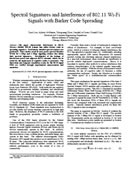 |
Spectral Signatures and Interference of 802.11 Wi-Fi Signals with Barker Code Spreading T. Lee, A. Al-Banna, X. Zhou, J. LoCicero, D. Ucci, IEEE Conference on Dynamic Spectrum Access Networks, Baltimore, MD, November 2005. |
Abstract- This paper characterizes interference in 802.11 Wireless Fidelity (Wi-Fi) systems that utilize Barker codes as spreading sequences. Particularly, detailed spectral analyses are performed. These studies result in exaxt power spetral densities (PSDs) for 1 Mbps and 2 Mbps signaling schemes that define their spectral signatures. Investigation of the leakage of interference power into adjacent 802.11 channels , which can be useful for the deployement of cognitive radios, is presented. The theoretical and computer simulation results for the Wi-Fi signal PSDs are verified through experimental measurements and emulation.
|
|
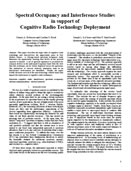 |
Spectral Occupancy and Interference Studies in support of Cognitive Radio Deployment Signatures and Interference of 802.11 Wi-Fi Signals with Barker Code D.A.Roberson, C.S.Hood, J.L.LoCicero, and J.T.MacDonald, IEEE Workshop on Networking Technologies for SDR, San Diego, CA, October 2006 |
Abstract—This paper describes the high value of cognitive radio technology and characterizes the opportunity space in four distinct classes. A Chicago-based spectrum occupancy study illustrates the opportunity showing that 82.6% of the spectral capacity is unused. A set of spectral signatures is presented for common devices in the unlicensed frequency band with the view that this technique can be widely deployed across the spectrum. The limitations of current network simulation tools in an interference environment are identified. Finally, the paper briefly discusses several of the non-technology related issues that impact the deployment of cognitive radio techniques.
|
|
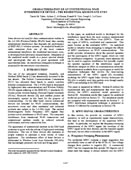 |
Chacterization of an Unintentional Wi-Fi Interference Device - The Residential Microwave Oven Tanim A. Taher, Ayham Z. Albanna, Donald R. Ucci, Joseph L. LoCicero, IEEE Conference on Military Communications,Washington D.C. October 2006 |
Abstract- Some devices not used for data communications radiate in the 2.4 GHz Wireless-Fidelity (Wi-Fi) band, thus causing unintentional interference that degrades the performance of IEEE 802.11 wireless systems. An analytical model for radio emissions from one of the most common unintentional interferers, the residential microwave oven, is developed from laboratory measurements. Simulation of the analytical model results in a power spectral density and spectrogram that are in good agreement with experimental data. An interference mitigation technique is proposed for the microwave oven emission.
|
|
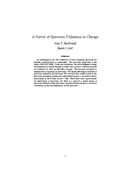 |
A Survey of Spectrum Occupancy In Chicago, John T. MacDonald, Report to the Wireless Interference Laboratory of the Illinois Institute of Technology, February 2007 |
Abstract- An investigation into the utilization of radio frequency spectrum for wireless communication is undertaken. The spectrum range falls in the range of 960-2500 MHz. Using test equipment, the electromagnetic energy was measured in several frequency bands over a period of several minutes on November 18, 2005, in downtown Chicago. The data was tabulated to estimate the occupnancy in each band. The issues affecting an estimate of spectrum utilization are discussed. We conclude that certain bands in the spectrum are heavily utilized and others which appear to be under utilized, particularly in the L-band above 1 GHz. There exist some opportunities for reallocation of spectrum, but there is a need for a better metric of spectrum utilization than spectrum occupancy which can lead to erronious conclusions as the the availability of free spectrum.
|
|
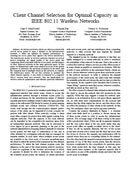 |
Client Channel Selection for Optimal Capacity in IEEE 802.11 Wireless Networks, John T. MacDonald, Udayan Das, Dennis A. Roberson, IEEE Conference on Dynamic Spectrum Access Networks, Dublin, Ireland, April 2007 |
Abstract—In wireless networks, clients are often presented with
several access points to open a channel to the infrastructure
network. A client can optimize its channel performance by
selecting the access point that registers the lowest interference.
The interference metric in wireless networks depends on several
|
|
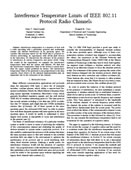 |
Interference Temperature Limits of IEEE 802.11 Protocol Radio Channels, John T. MacDonald, Donald R. Ucci, IEEE Electro/Information Technology Conference, Chicago, Illinois, May 2007 |
Abstract—Interference temperature is a measure of how well
a radio operating with a particular protocol and modulation
scheme can tolerate interference in its spectrum space. We
consider this tolerance metric for the IEEE 802.11 protocol for
|
|
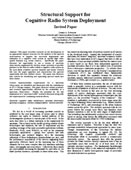 |
Strucural Support for Cognitive Radio System Deployment, Dennis A. Roberson, Second International Conference on Cognitive Radio Oriented Wireless Networks and Communications, Orlando, Florida, August 2007 |
Abstract—This paper describes research on the development of an appropriate support structure for the analysis of the spectral environments to support the successful deployment and utilization of a cognitive radio system in specific high value spatial domains (e.g. urban centers). Specifically the paper discusses the opportunity to use a system of spectrum observatories augmented by wireless sensor networks to provide guidance to the discrete radios within a cognitive radio system on the most likely available spectral channels and bands. Toward this end, the paper separates and characterizes the spectral opportunity into four distinct classes. The paper also discusses four criteria for identifying and separating spectral bands into these classes.
|
|
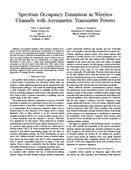 |
Spectrum Occupancy Estimation in Wireless Channels with Asymmetric Transmitter Powers, John T. MacDonald, Donald R. Ucci, Second International Conference on Cognitive Radio Oriented Wireless Networks and Communications, Orlando, Florida, August 2007 |
| Abstract—In proposed cognitive radio schemes, channel occupancy
is often offered as the metric to determine if a channel is
free to open a new communication channel. Channel occupancy is
the time average of detected transmissions above a certain power
level. In many systems the transmission power between the uplink side and down-link side are asymmetric. If a single power threshold is used, then a system may underestimate channel occupancy on the low power down-link side. This results in an increased probability of interference in an existing channel if a listen-before-talking scheme is used. To avoid this hidden terminal problem, cognitive radios need to better understand the receiver properties of existing wireless channels. |
|
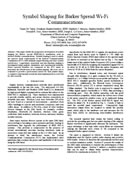 |
Symbol Shaping for Barker Spread Wi-Fi Communications, Tanim M Taher, Matthew J Misurac, Donald R Ucci, Joseph L LoCicero, IEEE Electro Information Technology Conference, Chicago, Illinois, May 2007 |
| Abstract—This paper details the progressive development of symbol
shaping for Barker spread IEEE 802.11 modulation used in
wireless fidelity communications. Symbol shaping is used to satisfy
the spectral mask requirements of the Federal Communications
Commission (FCC) with minimal output filtering and inter-symbol interference. Logarithmic, sinusoidal, and sinc-function shaping is investigated using analytic, simulation, and experimental methods. Power spectral densities are compared to the FCC mask to determine the effectiveness of the symbol shaping. Bit error rate is evaluated to provide a performance metric for each symbol shape. A complete experimental system has been implemented as a test bed for this research. |
